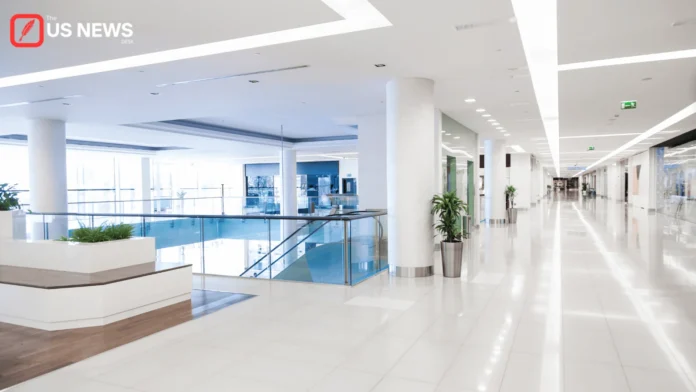The U.S. retail sector has long been bracing for a slow decline, but 2025 has accelerated what experts now call a full-blown retail apocalypse. Across the country, malls are shuttering at a pace that exceeds projections, leaving empty shells where once-bustling anchor stores stood. While the narrative of retail closures has been reported for years, the real story lies in the regional economic consequences—especially in Midwest towns where malls were not just shopping destinations but economic lifelines.
A Crisis of Speed: Faster Closures Than Expected
Industry analysts once predicted that malls would gradually decline over the next decade. Instead, data from the National Retail Federation shows a 40% rise in mall closures between 2023 and 2025. Department store chains like Macy’s, JCPenney, and Sears, already weakened by e-commerce, have pulled out of hundreds of regional malls, creating a domino effect.
When anchor tenants disappear, smaller stores follow. Without foot traffic, local businesses cannot survive, and property owners struggle to repurpose massive retail spaces.
The Midwest Impact: Communities Losing Their Hubs
While closures hit both coasts, the Midwest faces a disproportionate blow. In states like Ohio, Michigan, and Indiana, malls were built in the 1970s and 1980s as symbols of suburban growth. Today, many of these structures sit abandoned, surrounded by half-empty parking lots.
For small towns, the loss of a mall is more than an economic event—it is a cultural rupture. These malls housed not just retailers but also food courts, cinemas, and seasonal community events. When they close, tax revenues plummet, jobs vanish, and local governments face mounting fiscal pressure.
Dr. Samuel Greene, an urban economist at the University of Wisconsin, explained: “Malls in the Midwest were never just commercial spaces—they were civic anchors. Their decline strips communities of both income and identity.”
Why the Timeline Collapsed
Several factors have converged to accelerate the downfall:
- E-commerce Growth: Online shopping is projected to account for nearly 30% of U.S. retail sales in 2025. Platforms like Amazon and Walmart’s digital expansion dominate the consumer landscape.
- High Interest Rates: Rising borrowing costs have made refinancing debt nearly impossible for struggling mall operators.
- Changing Consumer Habits: Younger shoppers favor experiences over goods, choosing restaurants, gyms, and travel over traditional retail.
- Hybrid Work Culture: Remote work has reduced weekday traffic to suburban malls, once fueled by lunch breaks and post-work visits.
The Regional Economic Ripple Effect
The collapse of malls has a multiplier effect on local economies. Towns that relied on sales tax revenue now face budget shortfalls, impacting schools, public safety, and infrastructure. Property values near abandoned malls often drop, discouraging investment and fueling outmigration.
In Ohio’s Lorain County, the closure of a once-thriving mall cost the region more than 1,200 jobs. In Michigan, city councils are struggling to find redevelopment funds, as retail square footage vastly exceeds current demand.
The Midwest’s dependence on manufacturing already made these towns vulnerable. The loss of retail jobs deepens the economic divide, creating what some analysts call a “double hollowing out”—first factories, now malls.”
Can Dead Malls Be Revived?
Developers are experimenting with conversions—turning empty malls into housing complexes, fulfillment centers, or medical campuses. Some have been reimagined as mixed-use “town centers” with green spaces, apartments, and office hubs.
Yet, as the Urban Land Institute points out, such redevelopments are costly and often unfeasible in smaller markets with weak demand. While big cities may see successful conversions, rural and suburban towns lack the investment base to reinvent their dead malls.
Political and Social Fallout
The retail collapse has also become a political issue. Lawmakers in struggling states are pushing for federal redevelopment grants and tax incentives to repurpose abandoned malls. Critics argue that without systemic solutions, the Midwest risks becoming a landscape of economic deserts.
At the same time, the social consequences are stark. For many families, malls once provided safe spaces for teens, gathering spots for seniors, and cultural hubs for communities. Their disappearance leaves behind a vacuum not easily filled by digital alternatives.
Looking Ahead
The retail apocalypse is no longer a distant possibility—it is an unfolding reality. By 2030, some experts predict that only the strongest malls, typically in affluent suburbs and major cities, will survive. For much of the Midwest, the mall era is already over.
The rapid collapse underscores a deeper transformation of American consumer culture. What emerges in its place—whether digital dominance, mixed-use spaces, or entirely new community models—will shape the economic geography of the United States for decades to come.
Conclusion
The death of malls is not just about shuttered storefronts—it is about regional decline, lost identity, and a fundamental shift in how Americans live, work, and shop. In 2025, the collapse is moving faster than predicted, leaving Midwest towns scrambling to adapt. The retail apocalypse is no longer a metaphor. It is a lived reality.




